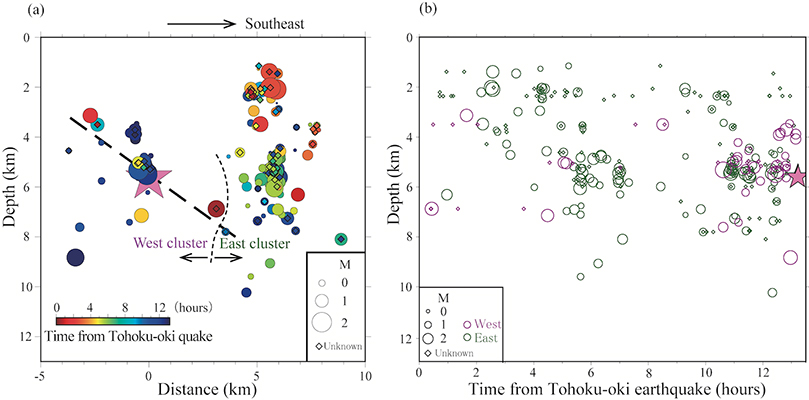Publishing in the journal Scientific Reports, researchers from Kyoto University's Graduate School of Science, the Japan Meteorological Agency (JMA), Tsukuba University, and the National Research Institute for Earth Science and Disaster Resilience (NIED) describe using waveform data from a dense local seismic network to reveal the complex mechanisms that led to the inland magnitude 6.2 earthquake that occurred approximately 13 hours after the magnitude 9.0 Tohoku-oki earthquake on 11 March 2011.
The question of whether large earthquakes are preceded by precursory seismic activity is one of the most controversial topics in seismology. Previous research indicates that specific space-time seismicity patterns may precede large earthquakes and are themselves the consequence of underlying slow-slip movements.
According to corresponding author Bogdan Enescu, the relatively large inland earthquake centered in the region of northern Nagano provides a rare opportunity to study this relationship in detail.
The team showed that previously undetected small earthquakes occurring along the northern Nagano fault shortly after the Tohoku-oki earthquake -- and until the M6.2 event -- were likely 'modulated' by the arrival of surface waves from large, remote aftershocks emanating from off the coast of Tohoku.
Enescu explains that one hour before the Nagano earthquake, there was an acceleration of micro-seismicity migrating toward the hypocenter of the M6.2 earthquake. Migration speeds indicate that potential localized slow-slip culminated in the large inland earthquake.
Moreover, the onset of seismicity in northern Nagano began shortly after the large initial quake, and may have been induced by the passage of seismic waves from the M9.0 earthquake, facilitated by the presence of fluids.
These findings suggest that detailed monitoring and modeling of seismicity may provide important clues for the forecasting of large inland earthquakes. Additionally, further detailed investigations of different geophysical processes may lead to more accurate forecasts and improved hazard assessments for Japan's inland regions.







